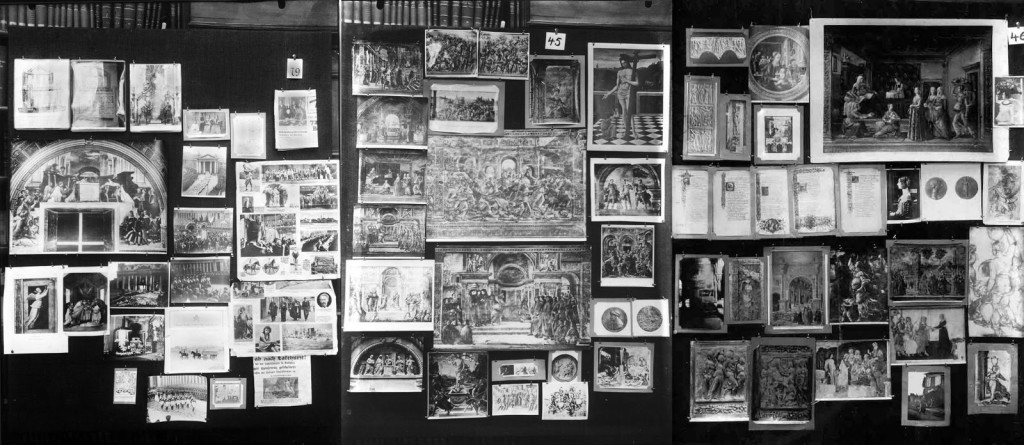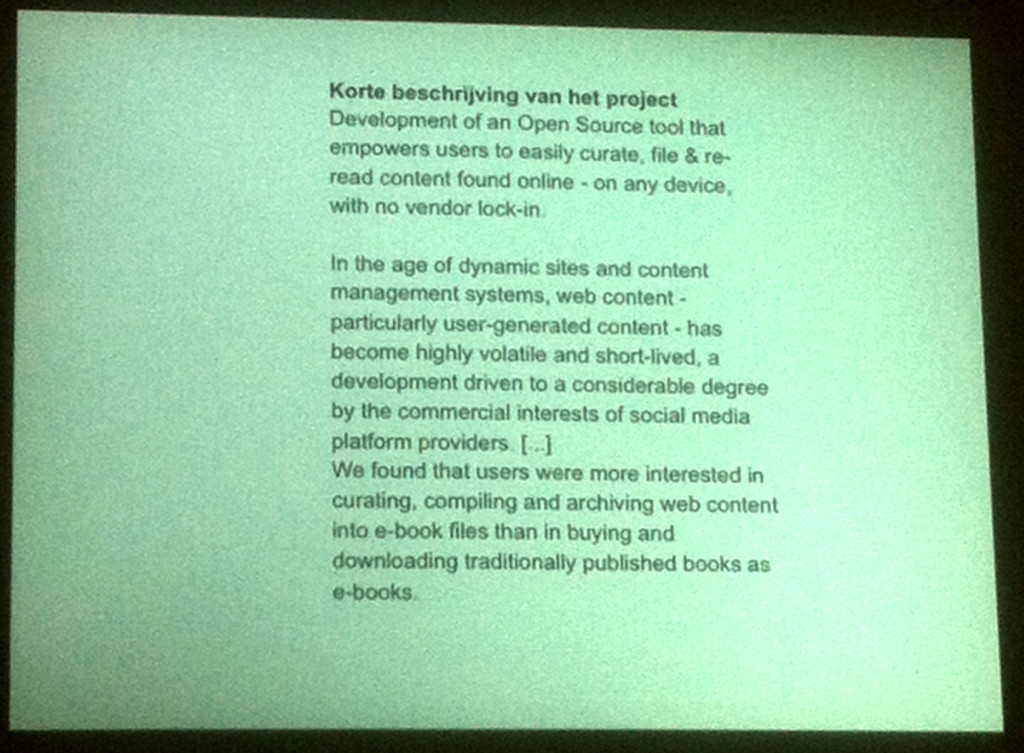On the 4th of November, Florian Cramer (artist, writer, theorist and director of Creating 010) gave a talk at Piet Zwart Institute (Rotterdam) on topic: “Curation as publishing/publishing as curation”. Or how to publish in an hybrid way, regarding the evolutions of reading with the Internet age.
Refusing to consider digital media as an “upgraded” printed book, Florian Cramer first argued that digital media and printed book should then be more considered as the same integrated process: publishing.
What appears with the Internet (and more especially the use of web) is that people tend to use electronic publishing as a personal archiving; they tend to “curate” their publications, rather than with classical publishing.
According to Florian Cramer, the “curator” has become a trendy expression, during the past two decades. If the name “curator” used to refer to this “gray invisible burocrat” that was in charge of the conservation of museum, it has now become a very important person of every exhibition who sometimes is considered as hierarchically higher than the artist.
But the “curatorial” way people use digital media by browsing on the web and picking publications & image to create their own library finds some similarities with the remix and the DJ culture, that are also part of our numeric era.
However, we shouldn’t think that the “curatorial” behavior is a brand new way of thinking, because some artists already experimented on those notions, before the Tumblr advent. Florian Cramer thus relevantly mentioned the work of Ed Ruscha (Twentysix Gasoline Stations, 1963) or Marcel Broodthaers (with Museum of Modern Art/ Department of Eagles, 1968), but also historian Aby Warburg and his Mnemosyne Atlas (begun in 1924), who tried to re-arrange and “curate” historical events and historically anchored images in an intuitive and non-linear way, breaking with conventions. Aby Warburg thus could be considered, Florian Cramer argues, as funder of the modern iconology, consisting in collecting and re-arranging content.
This could explain why one of my former teacher told me one day that in the past five years, almost half of the students quoted in their master thesis the example of the Mnemosyne Atlas. Even if this example became popular in this French art-schools environment, it appears that it is due to the fact that it is a relevant example to the current way of reading we are used to; it is more a matter of habits than a simple matter of trend.
Florian Cramer then noted that the “museum” used to refer to the idea of collection, of things placed together, as it coud be represented by Ole Worm (Musei Wormiani Historia, the frontispiece from the Museum Wormianum depicting Wormius) in 1655. The museum was in the beginning disconnected from the art system, and the notion of pieces of art. The museum was a tangible collection of different objets, books, stuffed animals…
“Curating” is thus not a new word, but according to Florian Cramer, it has been little by little integrated to the art system, used at first in sciences for computed databases, then for the Internet and finally in the arts.
We could consider that librarian and curator used to have similar roles, by being conservators of unique contents, that they protected and sometimes lend. This is, Florian Cramer argued, one of the most important changes that occurred; contents are not anymore available from an unique source, but contents are now shared in networks.
If underground sharing networks (peer to peer) have often developed under totalitarian regime (for instance, the underground share of Orwell’s Animal Farm during the soviet communism party), Internet made the peer to peer clearly easier. This could in a sense make reference to the notion of reproducibility that Walter Benjamin (“The Work of Art in the Age of Mechanical Reproduction”, 1936) and after André Malraux analyzed and defended regarding the work of art.
Florian Cramer then reviewed some examples of websites sharing cultural contents: TextZ.com by Sebastian Luetgert (1998), Ubu by Kenneth Goldsmith, but also Aaaaarg, Monoskop, Karagarga, Hyper allergic…
But he raised the awareness on the potential disappearing of common knowledge when content is only online. One great example of that could be Geocities, that stopped existing in 2009 after being sold to Yahoo. What if now Tumblr disappeared? As mentioned by Florian Cramer, most of documentation on net-art come from printed book nowadays, because it appeared that the websites hosting the artworks were now down.
“Don’t trust the cloud”, as Kenneth Goldsmith would say.
A file from personal collections would still be preferred to an only online-accessible content, Florian Cramer said, simply because it is more durable : it can survive and be distributed. He finished his talk by presenting us some ideas for an open platform, on which users could easily curate and be creators of their own collections.




